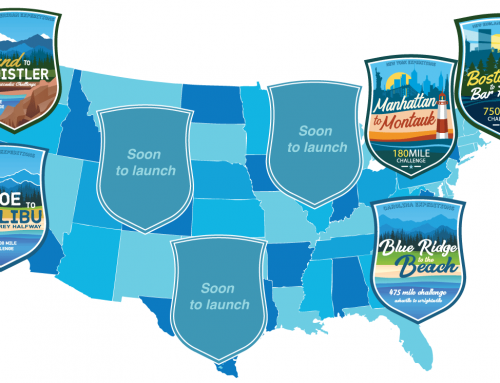By D.C. Lucchesi
The secret to running fast is actually no secret at all. Like the old adage goes, the way to run faster is to run faster. But that’s sure a lot easier to say – and write – than to actually do. But if you’ve got the itch to start shaving time off of your current PR, or just want to check that daily run off your list with more time to linger over breakfast, your scratch may be as close as your neighborhood school track.
Despite its simplicity, the track can be daunting for even an experienced runner. How fast, how far, or how often, are some of the lingering questions about how to best use this training tool to see results without getting bored, or worse yet, injured. Done right, and done smart, your track workout will add speed and strength to your running, as well as give you a barometer of your progress.
“You may get some argument, but I think the track also gets you some better form,” says Joe Schlereth, head coach and director for the Run For You training program. “The track also teaches you to run through some discomfort. That’s a good thing, especially for racing.”
Interval training, particularly shorter, faster intervals, adds Schlereth, fine tunes your leg turnover and turns on that “fast twitch” muscle ability that often goes dormant when running the same pace for every workout. Racing or not, spicing up your workout or training program with some faster running can keep your head in the game, too.
“Most runners will tell you that there’s something very motivating and honest about running the oval against your own watch,” says Jamey Yon, owner and coach of TRiYon Performance.
Whether you’ve been running for years, or are just getting started, the coaches we talked to agreed that starting slowly at the track, is ironically, the best bet to building speed. Schlereth says he directs runners in the Run For You program through their regular long run pace during their first sessions on the track, eventually building to intervals at 10K and 5K pace. A consistent diet of this workout is the base for the eventual 800 or mile repeats they’ll use to hone that speed for their specific race distance.
Building that solid base, says Yon, is what keeps you from getting hurt by ramping up your intensity, and falling into the trap of taking on too much, too soon. Yon suggests keeping the speed work to no more than 10% to 15% of your total weekly mileage. For the 20-mile-per-week runner, a great first session would be a 1-2 mile warm up, 10 x 400 at 5K effort, with 200 easy jog recoveries. Coaches note: Make sure not to run the 400’s so hard that you are forced to a walking recovery!
And, yes, our coaches feel sure you’ll get more from a track workout when you choose to run with a group. Training programs provide the benefit of structure, direction, and accountability. Having a coach-prescribed plan keeps you on task, of course, with the built-in motivation of the group.
Yes, misery really does love company. But isn’t fast company that much more fun?
# # #
D.C. Lucchesi runs, rides, and writes from Charlotte. When Lucchesi isn’t planning or participating in his own “next adventure,” the award-winning writer and former television producer can be found freelancing and waxing poetic on subjects ranging from health and endurance to schools and politics. When he’s not volunteering or coaching in some capacity with school-aged kids, he still enjoys interacting with grown-ups. Find him at dclucchesi@gmail.com.








